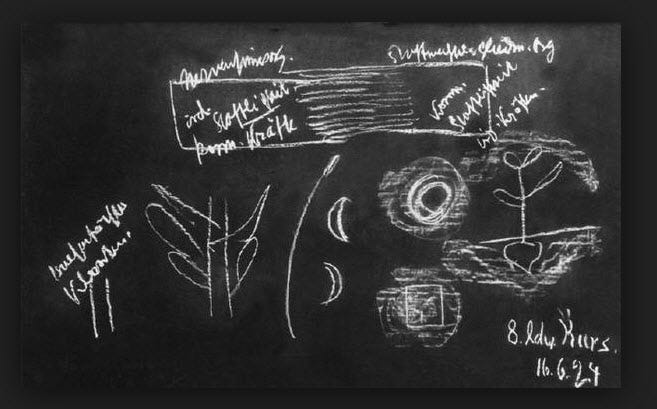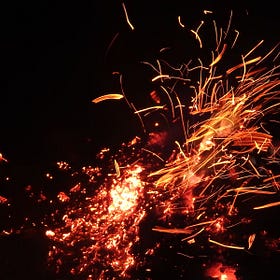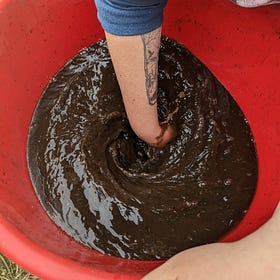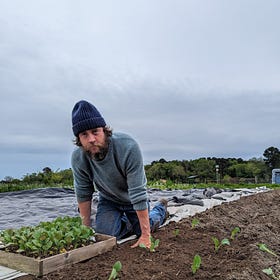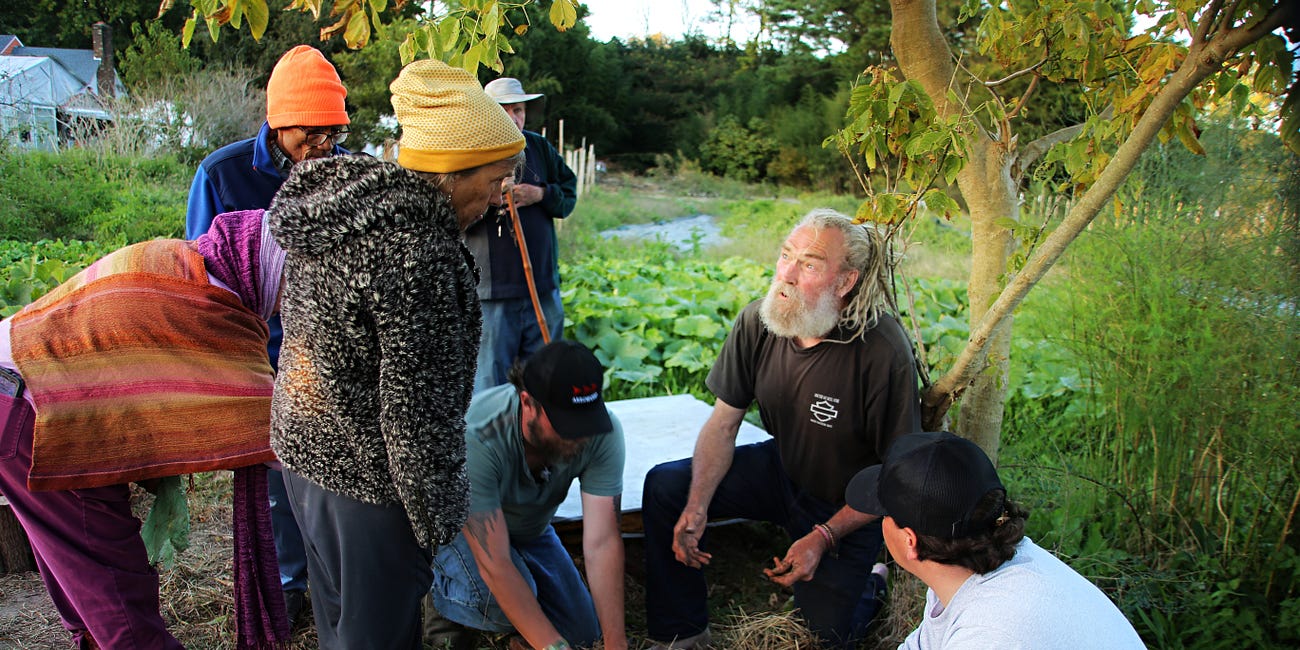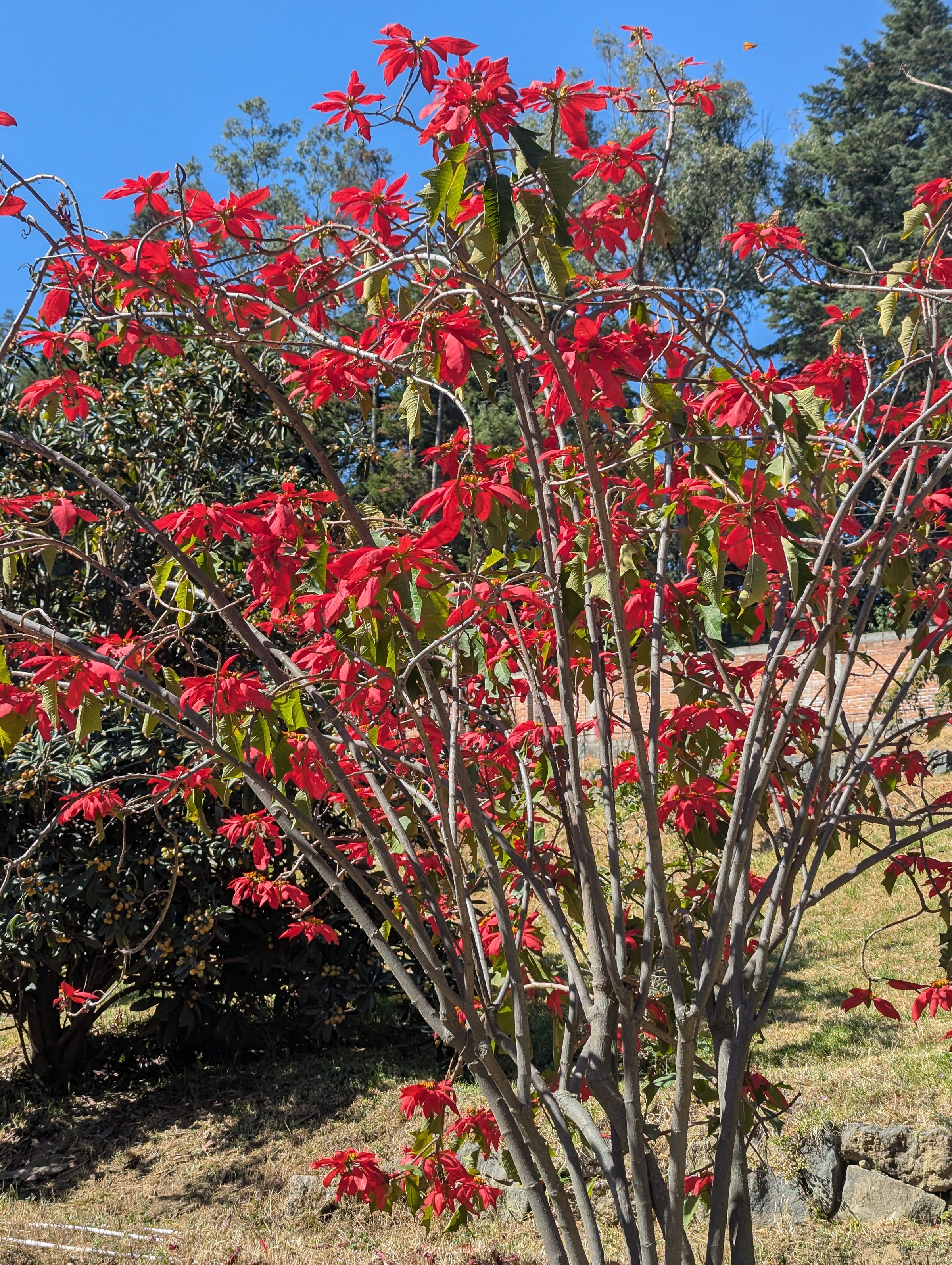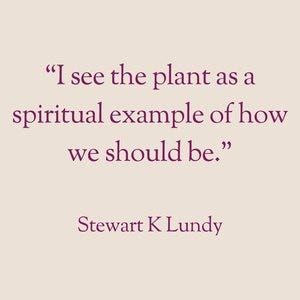2024 was a busy year full of travel, preparation-making, writing, and teaching. I’ve never been so busy with this biodynamic work.
Last January, we began the year by teaching at the Virginia Biological Farming Conference (VABF) in Roanoke, Virginia, and then traveling out to California to attend the Fellowship of the Preparation Makers Conference, where we got to meet Chris and Stephanie Tebbutt at Filigreen Farm — and John Jeavons at Ecology Action (thanks to Lloyd Nelson’s initiative). We visited Gaia Herbs thanks to Will Bratton (JPI board member and International Biodynamic Guild), where we presented with astrologer
and biodynamic maestro Lloyd Nelson. In conjunction with Spikenard Honeybee Sanctuary, we participated in a yearlong study group for the centennial of Rudolf Steiner’s Agriculture Course.FOPM 2024 Conference Experience
You’d be hard-pressed to find a more curious group of individuals than the Fellowship of Preparation Makers (FOPM).
We ended the year in December by traveling out to Mexico to make preparations with friends, old and new. In between it all were more conferences and travel, thousands of horns buried with manure, change and an exciting new vision of the future for the Josephine Porter Institute.
Simultaneous with the FOPM conference, I also participated in Dennis Klocek’s 2024 Alchemical Revival Symposium, presenting on the Sexual Alchemy of Biodynamics: The Sexual Alchemy of Biodynamics: Kundalini, Sublimation, and Compost. Recordings are available here.
The exploration of what is really at work within the biodynamic preparations is further explored in this article on Fanning the Flame of Life with Biodynamics. Those who’ve explored the riches of Vedanta, hermeticism, or Rosicrucianism will see how clearly biodynamics is simply an expression of these spiritual wellsprings.
Charles Cross with Das Goetheanum on Continuing the Legacy of Biodynamics undertook a gracious interview with me in February 2024, the transcript of which can be found here.
Gaia Workshop Summary & Photos
Driving from coastal Virginia to North Carolina, the terrain changed from flatland to rolling green hills. At Gaia Herbs Farm, we walked through well-established ginkgo trees led by JPI board member Will Bratton (Biodynamic Guild Podcast). The clouds are so dramatically different in the mountains compared to my own farm on the eastern shore of Virginia.
Some of Our Most Popular Posts
Some of our most popular posts from 2024 include a range of reflections from discovering spiritual concepts in nature, to timing of biodynamic sprays in a way that is not dogmatic but rather is sensitive to the unique situation in each garden, to biodynamic soil balancing beyond NPK, concrete dynamics of zodiacal taxonomy on the farm, the tragedy of living in the midst of conventional agriculture, and further ways to “level up” your biodynamic practices:
Discovering Spiritual Concepts in Nature
“If we want to attain a living understanding of nature, we must become as living and flexible as nature herself.”
When Should I Spray Biodynamic Preparations?
One question I’ve frequently encountered is: when should we spray out the biodynamic preparations?
How-To: Balancing Biodynamic Soils
This post is too long for email. Paid subscribers can read the complete piece based on fifteen years of farming experience, study, and book recommendations below. The value of these resources is incalculable.
The Reality of the Zodiac
On our farm, we raise sheep, hogs, cattle, geese, and a variety of other animals. One thing you’ll notice is that even if you feed the same food to each animal, every animal only becomes itself. Paracelsus calls the inner metabolic wisdom of the living organism the “inner alchemist.”
Killing More Honeybees
Many of you already know me, but some of you may not. When we moved to our farm in 2010, I had no idea what I was getting into. But without the folly of youth, we wouldn’t start much of anything, would we?
Leveling Up Your Biodynamic Gardening
Biodynamic practices work in concert with a wide array of regenerative and organic gardening and farming methods. In biodynamics, we do not dictate any particular approach to tending a garden. So long as it works for you and is a way of regenerating the soil more than it is depleted, it is likely a method that is compatible with biodynamics. Some of you may not know where to begin, though, so you might consider the work of
JPI Released a New Book
After much work with Mary Maruca, compiling and revising old Applied Biodynamics articles. This was a considerable amount of work, even though it was working through writing that was composed long ago. Many of these were written by Hugh Courtney, or selected by him personally as some of his favorites. He had intended to publish these as a book, but fate had other plans. I also have to thank John-Scott Legg and the team at SteinerBooks, without whom this book simply would not have happened. I wrote a dense introduction to the book, which can be previewed here:
New Book Release: Biodynamics for Beginners
We are releasing a new title with SteinerBooks, Biodynamics for Beginners: Principles and Practice, in which the “best of” Applied Biodynamics have been collected and edited. Much of Applied Biodynamics has reached an intimate audience, but it is time for the contents to reach the wider world. As a celebration of
This summer, the lovely people are Heart and Soil TV interviewed me about biodynamics, and specifically the new book Biodynamics for Beginners. Some of my contributions can be seen in their most recent issue of the Celestial Planting Calendar. They generously promote Biodynamics for Beginners, largely compiled from the work of Hugh Courtney, front and center in their latest printing. Hugh Courtney helped consult with the initial incarnation of the Celestial Planting Calendar, and his work is now carried on by
.Some of Our Workshops and Events
As JPI has returned to community-centered preparation-making, there has been a liberating effect, freeing the spirit of the being of JPI to grow beyond itself and to be open to its own future. As a plant that blossoms invariably sacrifices its resources for the future, JPI’s reorientation is an inner turning to offering the nectar of experience to the world — to all who will take it.
This spring we hosted one of our largest workshops yet, with people from across the country helping in the creation of the biodynamic remedies that go out across the world. For those of you who visited and participated, we thank you again! Your energy has spread across the globe, as far as to the mountainous heights of Nepal!
JPI sponsored and participated in the local Chesapeake Biodynamic Network (CBDN) Conference, with the generous collaboration of the Christian Community Center in College Park, Maryland and the Shanti Yoga Center in Bethesda, Maryland. Michael Judge put together a great event — one we’ve been too busy to write up a summary about! Krishna Gurug from Nepal presented about the work of the Kevin Rohan Memorial Eco Foundation KRMEF while in Maryland. Please check out their remarkable efforts in education, medical care, and the expansion of biodynamics in Nepal. JPI is honored to have been able to supply them with preparations during their visit to the USA.
In addition to this fall conference in Maryland, I was honored to be the first representative from JPI to be asked to speak at the Goetheanum in Dornach, Switzerland. My brief presentation I hope contributed something of value to the world. The recording will be made available here. I feel like I gleaned more than I gave, but that is always an indication of a fruitful event. I’m still working to incorporate the implications of that short visit. Some reflections from my visit can be seen here:
Visiting the Goetheanum
“If you want nature to treat you well, you must treat nature well. If you start destroying nature, nature will destroy you, and this basic moral precept is fundamental in our present knowledge of ecology and conservation. What we know now about ecology points to the fact that nature exists in the most delicate balance, and that anything which tends to upset the balance will produce consequences of the most unexpected character and often of the most disastrous character.” - Aldous Huxley
I also participated in the 2024 Biodynamic Association Conference, presenting alongside Mac Mead and Wali Via about “How Our Spiritual Lives Inform Our Work with Biodynamics and the Preparations” — the recordings are available here.
This fall, I hosted (yet another) biodynamic workshop with farm-grown vegetables and homecooked meals from
, who rather graciously was preparing for the workshop whilst I was off galavanting in Europe. The workshop was not just a success, it was a delight. Michael Judge visited and gave a remarkable talk on the metamorphosis of the human skull in relation to the evolution of consciousness and how biodynamics relates to this! We had visitors from as far as Oregon here in Virginia, as well as a surprise visit from Ben Campbell who farms biodynamically at Sophia Farm in Japan. The richness of this diverse range of people from widely varying backgrounds was deeply enriching. You can read about our autumn 2024 workshop here:My December 2024 expedition to Mexico was a revelatory experience. While I’ve traveled to some other countries before, I’d never been to Mexico. The eye-opening experience of a radically different space reminded me intensely of tropical plants, where the floral colorful expression emerges in the leaves rather than the petals. In more tropical regions, one often finds what might emerge in beautiful displays before the emergence of the flower pole. One could almost say there is a geographical tendency to express the colorfully in the middle rhythmic system (though clearly still closer to the flower than to the root).
In the large poinsettias growing in Mexico, known as la flor de Nochebuena (“Christmas Eve Flower”), one finds relatively inhibited (but fully functional) flowers surrounded by brilliantly pigmented leaves. I was only used to seeing short poinsettias around Christmastime in the USA, but in their native habitats, they grow quite large. The sweet nectar rising through their small yellow flowers feeds innumerable monarch butterflies. “If we pull a plant out of the ground we may see that in the roots there is cosmic force, in the blossom mostly the terrestrial element and only in the finest shading by the colour the cosmic element can be seen.”1 Yet the inhibited quality of some plants show a displacement of what is “normal” in temperate climate vegetation: the vibrant red colors we might only expect to see in autumn in the leaves appear during the normal growing season as a healthy expression in poinsettias. While a colder climate might reserve colorful expression for the flower petals itself, other regions bring forth the “cosmic element” of coloration within the leafy region. It is no surprise that poinsettias are poisonous, just based on how they manifest their colors. As Steiner suggests, “All plants which in any of their parts assimilate astrality from out of the Cosmos are poisonous.”2
The Dynamics of Creation in Mexico
It had been a long time coming. Jose, Alejo, and I have been talking for years, and we’ve been nurturing the idea of a new intensive retreat in Mexico. As with anything that is born, there is a prolonged gestation period before the newborn impulse arrives. We want to express our special thanks to Ricardo, who hosted us at his ranch, and to his team for managing hospitality and attentively filming the entire event (thank you, Maria and Aguirre!).
A recent podcast conversation with the Garden and the Moon was released in December 2024, which explores how plants are models for our own spiritual development. And how could it not be for a farmer? Perhaps you will feel it to be so for you as well.
What’s Upcoming!
As I write this, I’m looking forward to going to the Utah Farm & Food Conference to present with biodynamic maestro Lloyd Nelson and our cosmic journaler, Russell Blackstone. (Lloyd promises to show me petroglyphs in the desert, so look forward to seeing more soon!)
JPI is a sponsor of the Fellowship of Preparation Makers (FOPM) Conference in Viroqua, WI. There’s an interesting lineup of speakers, check it out here. If you’re able to make it out, we’ll see you there!
In addition to this, JPI is planning our own 2024 Chromatography workshop. For those interested, we will be accepting soil samples to prepare chromas in advance of the workshop. JPI will develop chromas from your soil (or compost) samples. During the workshop itself, we will work through practical hands-on tutorials.
Important: Our 2025 Chromatography workshop will be from March 20th to March 22nd. Participants must both purchase a ticket and mail their samples to us at least two weeks before the event itself. We will make chromas of your samples in advance of the workshop, so the results can be compared and discussed with the group. Chromatography takes time, patience, and resources to develop.
If you are unable to submit samples (or do not wish to do so), you may still attend the workshop. When collecting samples, please gather from twelve (12) different spots and combine the samples together. Send 10 grams of dried material (whether compost or soil) per sample. Limit two samples per attendee. To dry the material, do not expose to direct sunlight and do not heat over 120F. Above 120F, enzymes rapidly break down, and a major part of chromatography is revealing the dynamics of enzymes. Label your combined 10g sample(s) clearly and mail the samples to the address indicated on the event page.
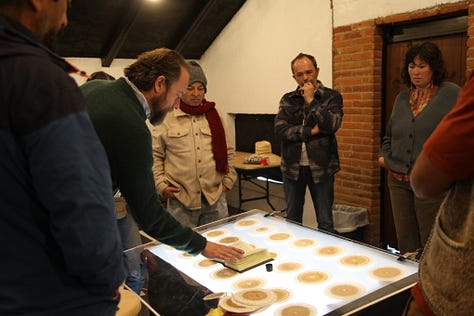
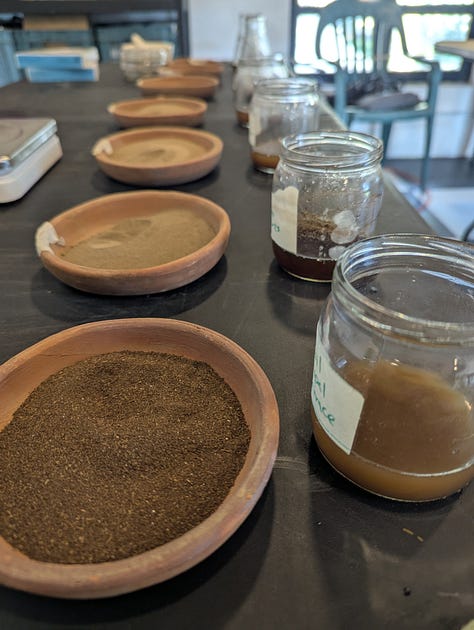
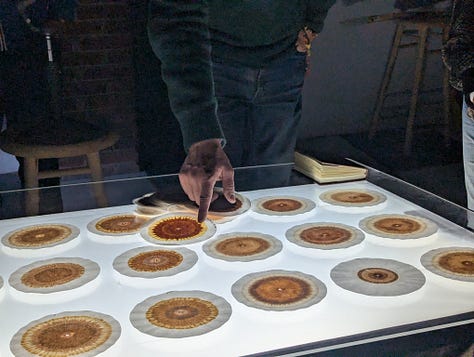
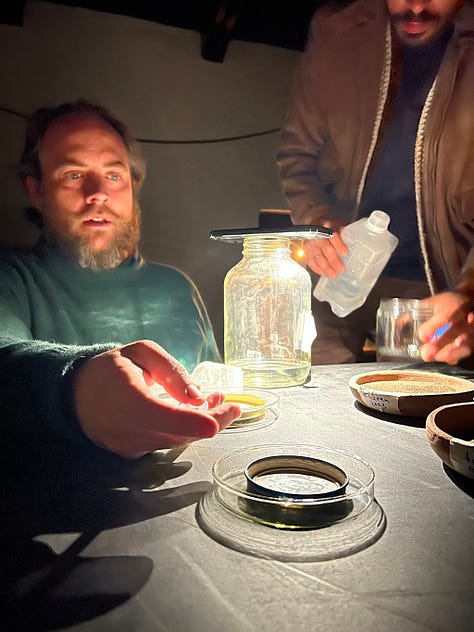
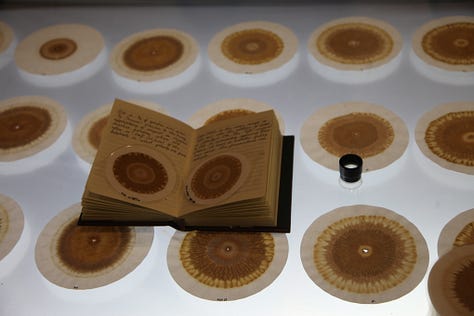

In addition to this, we are planning our fall workshop during the Michaelmas season 2025 and we’ll be needing a whole team of folks together to stuff cow horns with manure and help bury them int the ground! We hope you’re able to attend then as well.
R. Steiner, Agriculture Course (GA327, 10 June 1924, Koberwitz)
R. Steiner, True and False Paths in Spiritual Investigation (GA243, Torquay, 19 August, 1924)






